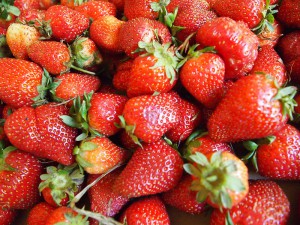New methods provide high strawberry yields without toxic fumigants
Methyl bromide is an organobromine compound used as a fumigant. Although methyl bromide use has been phased out pursuant to the Montreal Protocol on Substances that Deplete the Ozone Layer and the Clean Air Act, exemptions continue to be made for strawberry production. One of the primary issues with methyl bromide is that it depletes the ozone, but health effects associated with exposure are also of concern. To avoid the environmental and health risks associated with this chemical, recent studies have attempted to find methods for growing strawberries without the use of methyl bromide. A new article, published in California Agriculture, points out some non-fumigant alternatives for strawberry growers: soil-less production, bio fumigation, anaerobic soil disinfestation, and disinfestation with steam. Their results showed that fruit yields on plots testing soil-less production, anaerobic soil disinfestation, and disinfestation with steam were all comparable to those on conventionally fumigated plots. This gives hope that future strawberry production will be less reliant on these toxic chemicals, and may allow for fewer exemptions to the use of methyl bromide.


